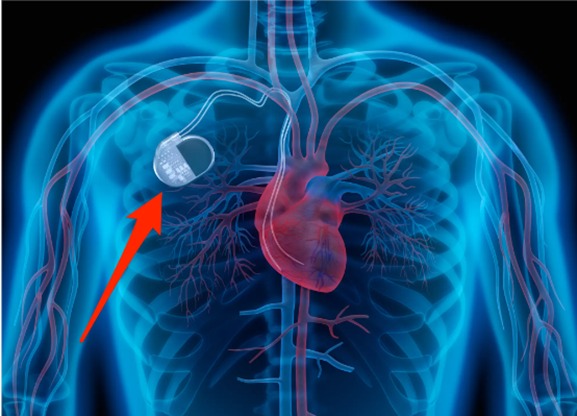PACEMAKER – PPI
A pacemaker is a small, battery-powered device that prevents the heart from beating too slowly. The device is placed under the skin near the collarbone.
A pacemaker also is called a cardiac pacing device.
There are different types of pacemakers.
- Single chamber pacemaker.This type usually sends electrical signals to the lower right chamber of the heart.
- Dual chamber pacemaker. This type sends electrical signals to the upper and lower right heart chambers.
- Biventricular pacemaker.This type also is called a cardiac resynchronization pacemaker. It’s for people who have heart failure and a slow heartbeat. The device stimulates both lower heart chambers. It helps make the heart muscle stronger.
Why it’s done
A pacemaker is used to control or increase the heartbeat. It stimulates the heart as needed to keep it beating regularly.
The heart’s electrical system typically controls the heartbeat. Electrical signals, called impulses, move through the heart chambers. They tell the heart when to beat.
Changes in heart signalling may happen if the heart muscle is damaged. Heart signalling problems also may be caused by changes in genes before birth or by using certain medicines.
You may need a pacemaker if:
- You have a slow or irregular heartbeat that lasts for a long time, also called chronic.
- You have heart failure.
- A pacemaker only works when it senses trouble with the heartbeat. For example, if the heart beats too slowly, the pacemaker sends electrical signals to correct the beat.
- Some pacemakers can increase the heartbeat as needed, such as during exercise.
A pacemaker may have two parts:
- Pulse generator. This small metal box has a battery and electrical parts. It controls the rate of electrical signals sent to the heart.
- Leads. These are flexible, insulated wires. One to three wires are placed in one or more of the heart’s chambers. The wires send the electrical signals needed to correct an irregular heartbeat. Some newer pacemakers don’t need leads. These devices are called leadless pacemakers
MICRA- Leadless Pacemaker
Micra is the world’s smallest pacemaker without wires. Unlike most pacemakers that are placed in a patient’s chest with wires (leads)running to the heart, Micra is a leadless pacemaker because it’s implanted directly into the heart .
Micra pacemaker leaves no bump under the skin, no chest scar, and requiring no lead. Micra is completely self-contained within the heart and provides the therapy needed without a visible or physical reminder of a medical device
- Smallest pacemaker — Micra is 93% smaller than conventional pacemakers, about the size of a large vitamin capsule.2 (0.8ml), 1.75gm
- Less invasive — The procedure requires no chest incision and, unlike conventional pacemakers, does not create a scar or bump under the skin.
- Fewer restrictions — For most patients, the Micra design translates to fewer medical complications and fewer post-implant activity restrictions
